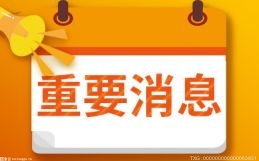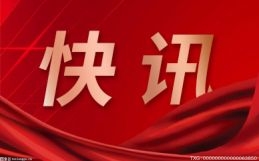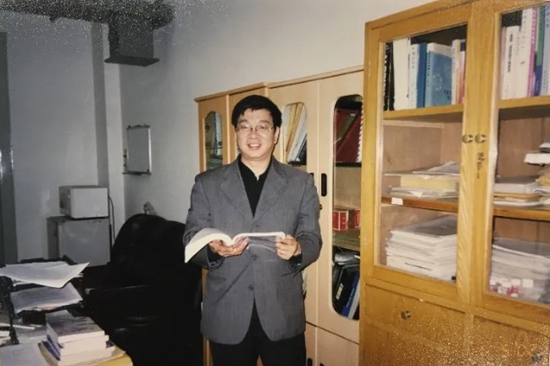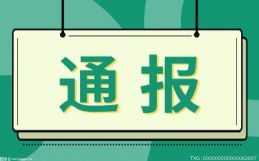什么叫做英语自然拼读法_什么是英语自然拼读法
1、1. 自然拼读法的第一步是掌握二十六个字母的读音 (Letter Sounds). 其中五个元音字母(a, e, i, o, u)发两种音。
 (相关资料图)
(相关资料图)
2、2. 第二步是进行单元音字母的拼读练习,如: Sam, cat, mat, 等等.3. 第三步, 是固定读音的单词 : the, a, is, to, have 等.4. 第四步,是一个单词里有两个元音时, 前边一个元音发字母音, 后边一个元音不发音,如: make, made, sea, five, nine, road等等.5. 第五步, 是双/三辅音在一起时怎么联读, 如: bl(ack), str(eet)等;有一些辅音不发音,如: ghost, comb, lamb等;要掌握一下和"h"联在一起的发音: ch, sh, th, wh。
3、6. 第六步,是特殊读法:单音节词,以元音结尾, 这个元音发字母音. 如: me, hi, go 等等Irregular: ar (car), ay (hay, may, say), igh (high, night, might), ew (new), er (sister, brother), ur (burn, hurt), ir (girl, fir, firm), or (horn), eigh (eight), oi (oil, boil), oy (boy), ow等有其特别的发音."c" 和 "k" 在一起时, 发一个音: quick, black等.二. 直接拼读法的基本原理1.英语是一种拼音字母。
4、英语是一种拼音(phonological)文字,英语单词是以字母组成,字母或字母组合构成了单词的读音。
5、如:(1)辅音字母的读音: 音形一致的拼音:b[b],p [p], m[ m], f [f],d [d],t[t],n[n],l[l],g[g],k[k],h[h],l [l] ,r [r], v [v], w [w], z[z],音形不一致的拼音: c [k] [s] [ ], g [g] [d , j [d ], x [ks] ,y [j], s [s] [z] [ ] [ ]最常见的辅音字母组合的拼读sh [ʃ], ch [tʃ], th [θ], ph [f],(2.)元音字母的读音:元音字母的拼读,首先我要学生先了解什么是开音节?(以元音字母结尾的音节为开音节),什么是闭音节?(以辅音字母结尾的音节为闭音节),并和学生一起寻找发音规律,规律找到了,当学生了解了音节的规律,元音字母的发音就迎刃而解了。
6、如:★开音节的拼音:A 发字母本身音[ei] age, ate, name, cake, lake, take, make, game, gave, made, late, came, bate, date, face, gate, hate, page, race, same, tame, wake, gave, famous, lady, bake等。
7、E发字母本身音[i:] be, these, me, he, she, we, 等。
8、I发字母本身音[ai] I bike, China, like, fine, five, kite, nice, wide, Friday, ride, white, write, Chinese, ice, line, mine, life, idea, nine, 等。
9、O发字母本身音[u] ago, radio, go, photo, rode, old, told, hold, cold, home, those, kilo, so, homework, phone, also, no, note, robot, nose, hope, joke, close, stone, clothes, broken等。
10、U发字母本身音[ju:] cute, bute, mute, fume, men, pupil, argue, use, 等。
11、★闭音节的拼音:A 发[ ]口型要打大at, bat, bad, band, apple, animal, fat, has, am, and, cat, cap, bag, family, capital, Saturday, than, had, grand, carry, happen, back, ran, badly, angry, sad, rang, flat, map, mat, van, man, ban, bap, can, cam, cab, cad, catch, hand, fantastic, thank, black, blackboard, panda, that, happy, activity, drank, dragon, taxi, swam, hat, sad, dad, mad, mat, pat, rat, sat,fan,lam,tad, van, wan等。
12、E 发[e]让学生老师模仿口型 when, met, them, well, smell, tell, ball, clever, every, help, better, west, then, yes, yesterday, fell, hello, desk, red, yellow, ten, pen, pencil, bed, bedroom, dress, festival, get, telephone, egg, went, leg, twenty, next, let, men, chess, bet,net,pet ret,set,tet,vet,wetI [i] different, bring, holiday, lift, ticket, big, dinner, fish, listen, it, is, six, this, in, sister, his, him, bit, little, river, picnic, think, city, with, finish, sit, chick, skip, miss, nothing, pink, picture, little, listen, thing, drink, visit, swim,O发[ ] 让学生老师模仿口型drop, shop, box, bottle, coffee, lost, cross, long, pop, stop, dog, not, body, box, clock, computer, doll, got, hot, pocket, office, point, lots, doctorU发[ ] us, study, funny, but, bus, sun, Sunday, summer, hurry, mum, under, understand, cut, duck, truck, muck, much, puck, lucky, fun, gun, Hun, nun, pun, run, sun, tun, up,字母组合的读音也是有规律可循的。
13、如;ea, ee字母组合的发[i:]音:tea, clean, team, eat, east, speak, please, each, easy, read, sea, teacher,need, cheese, wheel, feel, agree, green, week, thirteen, fourteen, three, deep, peep, weep, sleep, jeep, see, feet, street, teeth, meet, week部分ea字母组合发[e]:bread, heavy, breakfast, weather, head, headache, ready, deaf,oa,字母组合的发[u]音:road, boat, coat, ir字母组合的发[ ]音:girl, bird, thirsty, third, first, birthday, circle, sir, shirt, skirt, dirty, skirt,ar,组合字母发[ a:(a再s, ss前)也发[a:]:hard, card, park, art, car, are, dark, arm, farmer, market, party, large, star, argue,farclass, vase, glass, pass, last, past, task,, mast, vast, cast, fast等ow字母组合有时发[u]音:window, yellow, show, slow, sow, tow, bow, mow, 等。
14、ou, ow字母组合有时发[au]音mouth, about,, house, housework, south, how, now, town,等。
15、oo字母组合有时发发[u]音:hood ,头巾wool ,羊毛 look ,good , foot, room, football, took, cook wood, book, goodbye,oo字母组合有时发[ u: ]food, moon, tool, toon, 红椿 noon, pool, zoo, too, school, cool, toothear字母组合有时发 [i ]音:tear,dear,fear,gear,hear, near,shear,rear,searear字母组合有时和air一样发[ ]:bear, tear, wear, pear,oy字母组合发[ i ]音: boy, toy, hoy赶牲畜的呼叫声, coy腼腆的, foy告别宴会, goy, 异教徒soy酱油;黄豆iht 字母组合发[ ai ]音:right, light, night, fight, might, tightay字3、直接拼读法存在例外是一种正常现象英语单词的读音方法与拼写不一致,甚至一个英语字母有多种读音或一个元音可以代表多种发音。
16、例如:字母Aa可以有八种读音:在开音节单词中发[ ei ]“date. make .came”等;在闭音节中发[ ]”map, cap, cat. ha等”;在s,ss前发[ a: ]”fast, pass, glass, class, passport”等;在轻读音节中发[ ],“about, above, again, abroad, ago”等;在单词want,中发[ ];在单词“wall”中发[ ];在单词 “comrade”中发[ i ] ;在单词“many”中发[ e ]。
17、另外还有一些字母组合。
18、例如:ay; ea; ar; oa; ear; ai;等。
19、总之,一个英语字母有多种发音或一个元音可以代表多种发音,这是一种经常现象,并不影响学生学习和掌握直接拼读。
20、母三。
21、1. 二十六个字母的读音 (Letter Sounds). 其中五个元音字母(a, e, i, o, u)发两种音, 其中一个音是其字母本身的读音,y有时会被作为元音处理单音节词, y在末尾, y发“I”的音(one syllable, y at the end (pronounced as “i”)): my, why, fly, sky多音节词, y在末尾, y发“E” 的音(two syllables, y at the end (pronounced as “E”)):daddy, mommy, baby2. 单元音单词拼读 (Consonant-Vowel-Consonant Combinations) 如:Sam, cat, mat, 等等.Beginning ConsonantsEnding Consonants One Vowel Word, Short Vowel Sounds3. 双元音单词拼读(Two Vowel Words):一个单词里有两个元音时,前边一个元音发字母音,后边一个元音不发音. 如:make, mail, may, hay, say, see, sea, five, tie, road, toe, cute等等.4. 双/三辅音在一起时的联读 (Consonant Blends)Beginning consonant blends (bl, br, cl, cr, dr, fl, fr, gl, fr, pl, pr, sc, sk, sl, sm, sn, sp, st, sw, tr, tw, scr, spl, str)Ending consonant blends (ft, lf, lm, lp, lt, mp, nd, nk, nt, pt, sk, st)Words ending in ll, ss, ffConsonant digraphs (ch, tch, sh, th, wh, shr, squ, thr)5.特殊读法(1) - 固定读音的单词(Sight Word): the, a, is, to, have, are, hey, love 等.6. 特殊读法(2) – 带元音的特殊读法(Irregular Vowels)一个音节如只有一个元音, 且以此元音结尾,这个元音发字母音 (vowel at the end).如:baby, me, hi, go, humor 等等air (hair), al, all (all, tall, mall, hall), alk (talk, walk), alt (halt, salt), ar (car, far), are (hare), au, augh (caught), aw (hawk)ew (new), eigh (eight, weight), ed (stopped, added) er (sister, brother), ir (girl, fir, firm), ur (burn, hurt), or(horn), ie (field), ing, ind (behind), ild (mild, wild), igh (high, night, might), ire oi (oil, boil), old (old, cold), olt, oo (book), oo (tool, school), or (or, horn), ost (most, host), ou (could), ough (cough, through, ought, slough, plough), ould (would, could), oy (boy), ought, , ous (famous), ow (读音一:cow, now, how, bow; 读音二:bow, snow), ue (cruel), ui (fluid)tion (attention), sion (expression), ending sounds :ang, ong, ung, edge, le7. 特殊读法(3) – 辅音的特殊读法有一些辅音不发音 (silent consonants).如:ghost, comb, lamb, write等"c" 和 "k" 在一起时,发一个音:quick, black等."q" 总是和"u"在一起:quite, quick, quit, quilt等.之所以指出这一点, 是在这里u不能再被认为是元音, 而是和q一起组成一个辅音组合. 于是, 在quite这个单词里只有两个元音, 是双元音单词, 第一个元音i发字母音, 第二个元音e不发音."p"和 "h"在一起, 发"f"的音:phone, photo.复数s及末尾s的读音(Plural s and the sounds of ending s)c和g 的两种读音: 如果i(或y)或者 e 跟在c或者g的后边, c发”s”的音, g发”j”的音: center, cigar, gem, giant, gym,其他情况下c, g 发其字母音:can, clap, cup, great, glad.8. 多音节单词和复合词 (Words with multiple syllables and compound words)多音节单词:believe, multiple, syllable, compound复合词:homework, highway组合发[ ei]音: stay, say, day, gay快乐的, hay干草, lay设置。
本文到此分享完毕,希望对大家有所帮助。
标签:















